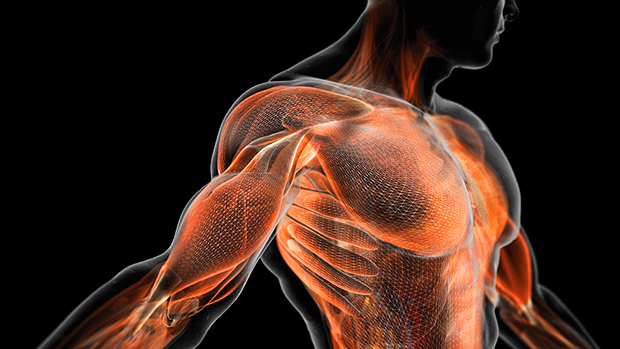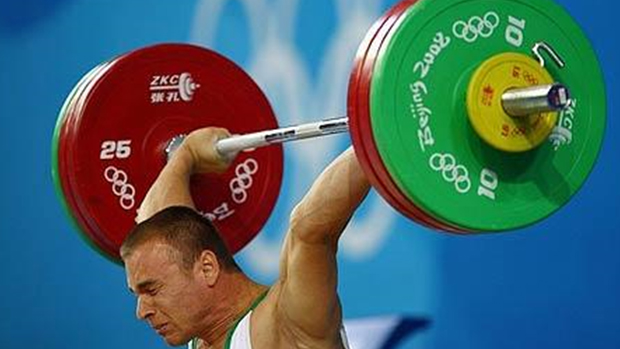When it comes to injury, lifters and athletes will do just about anything to get back into the gym. They're desperate to get under the bar again without feeling like a knife is being driven deep into their sciatic nerve.
Shoulder, lower back, and knee injuries are reaching epidemiologic levels. But not all therapy and rehabilitation are equal. There are gold standard methods and practitioners that can return you to the iron and reduce your likelihood of reinjury, but there also are fluffy methods and non-lifting healthcare professionals who will waste your time and money.
If you're hurt, know which therapy methods to prioritize and which ones to avoid even if they "feel good" at the time. And please, go out of your way to find a rehab pro that actually knows a thing or two about training, and maybe even looks like he lifts.
Disclaimer: The following videos are for demonstration purposes only. If you don't have a license to practice these techniques, well, don't!
The Best
When it comes to chronic and overuse soft-tissue injuries, you'd be hard pressed to find a technique that's as acutely detailed as Active Release Techniques. This is true in both the physical diagnostic process and the actual treatment.
Developed by Dr. Michael Leahy, ART has been around for decades and became mainstream in sports and fitness simply because of the results people get from it. What is it? A hands-on technique placing tension over soft tissues – including muscles, tendons, ligaments, fascia, and nerves – and moving those structures from a shortened position to an actively lengthened and stretched position under manual tension.
There are over 500 unique protocols for nearly every structure in the body, which provides the opportunity to break through rehab plateaus, especially if you find a truly talented and experienced practitioner.
For beat-up meatheads with postural imbalances and soft-tissues that resemble Jack's Links beef jerky instead of supple and functional units of anatomy, investing in regular ART treatment is one of the most powerful things you can do to not only get over a nagging injury, but prevent future injuries as well.
The use of a tool to assist in the manipulation of soft tissues is nothing new. It's been around for thousands of years dating back to the traditional Chinese medical gua sha technique that involved scraping the skin with a beveled rock to elicit blood flow and healing to injured areas. You might've seen the gruesome purple bruising that this tool has become notorious for. Lucky for us, instrument assisted soft tissue mobilization (IASTM) has come a long way.
Claims of "breaking down scar tissue" aside (it's very unlikely that's happening), IASTM provides a very powerful neurologic response to tonic musculature and fascial sheaths, aiding in the improvement of mobility and function in the process when paired with movement remediation and exercise therapy.
The skin is a very responsive tissue neurologically and doesn't get enough credit in the functional pyramid of importance. It has the ability to direct change in tone and function to the underlying structures below, and it's the easiest bodily organ to access.
Caution: If your practitioner aimlessly and painfully bruises your tissues and tells you not to worry about it, go see another professional that actually knows what they're doing.
Just the mention of dry needling will have the acupuncturists filling up my inbox with troll mail. But you know what? No one profession owns a technique or tool, so enough with the butt-hurt.
Dry needling is a general term for therapeutic treatment involving multiple advances of a filament needle, which goes into a muscle producing pain and typically containing a trigger point. And no, dry needling is not a type of acupuncture; acupuncture is actually a type of dry needling.
Dry needling is one of the most progressive types of physical therapy treatment methods in the industry today. Nearly every state board allows physical therapists to practice dry needling in the evaluation, assessment, and treatment of patients with neuromusculoskeletal dysfunction or pain.
Movement experts now have access to another tool in the toolbox that'll help clients recover. Is dry needling the be-all end-all of physical therapy? Absolutely not, but giving experts another way to help people isn't a bad thing.
Blood Flow Restriction (BFR) training has made its way through the fitness industry, especially within the bodybuilding community. But since muscle form and function is essentially the same no matter what the intended use, BFR mechanisms of strength and muscle growth started to catch the eye of rehab practitioners with those same goals for their patients.
By occluding a muscular region with wraps, bands, or cuffs at approximately a 7/10 perceived level of tightness, muscular resistance training can be carried out using fractions of external loads, as low as 20-40% of a predicted 1RM. Then higher set and rep ranges would create a highly metabolic environment perfect for increasing muscle growth and strength.
The most exciting aspect of BFR is the ability to build muscle tissue in lagging regions while minimizing the joint stress and shear forces that are most commonly involved with maximally loaded exercises. Doing work with less weight means joint stress is greatly decreased, while metabolic stress of the local environment is maximized.
It's killing two birds with one big ass stone, and it's why I prioritize this method not only for the rehab of pain and dysfunction, but also for performance training and aesthetic programming i.e. working out to look good naked.
Some may wince at the inclusion of spinal manipulation, but hear me out. When used intelligently, as a part of a holistic, movement-based rehab plan, the novelty of a "spinal adjustment" may be one of the most powerful ways to reset a painful or dysfunctional tissue or region.
It's true, chiropractors are specialists when it comes to manipulating the spine, but they're not the only rehab pros with the ability to crack backs. In most states in America, other healthcare pros including physical therapists have the education, knowledge, and skillset to "mobilize" the spine using higher velocity forces.
So don't seek out rehab practitioners based on the type of license they hold, but instead find one with multiple tools in their therapy arsenal. Find one who can tailor their treatment for you and your needs, rather than arbitrarily using a specialty they've become biased towards. Above all else, make sure your guy knows training, appreciates the powerful effect of movement, and actually has a movement practice of his or her own.
The Worst
Massage has its place in recovery, but it's limited when it comes to treating pain and dysfunction. Why? Because movement needs to be assessed and injury needs to be diagnosed. This is one of the most important aspects of successful rehabilitation. It's what gets you back to training and prevents future injuries from occurring.
Licensed massage therapists don't diagnose musculoskeletal or neurological dysfunction, so it's limited in its carryover to producing results if you're truly injured. That said, it's possible to randomly and unpredictably receive therapeutic benefit from massage when injured. If you rub up on enough musculature, something is eventually bound to happen. But you'd rather have a sniper remediate a functional weak link than drop a bomb on Hiroshima.
What are massages best for? Systemic recovery. Save them for times when you need to expedite overall recuperation. If you're hurt, go see a licensed healthcare practitioner with the ability to properly diagnose your exact problem.

Similar to IASTM and dry needling, the practice of cupping has made its way to our Western medical model, especially here in North America. But different from needling and tooled soft tissue manipulation, cupping isn't quite as effective. Why would a practitioner use this method when so many other more notable techniques have proven themselves effective?
By placing cups on the skin and drawing the underlying skin up into the cup by means of air or heat decompression, the technique is thought to drive local blood flow into the area to aid in the healing process.
This method has begun to die off here in America, again due to having many superior alternatives to remediate similar dysfunctions, but I've seen it stick around in some clinical settings due to one reason: the ability for the therapist to bill insurance for "manual therapy" which can actually receive a higher amount of reimbursement.
Manual therapy should involve a more highly elevated skill set than placing cups and pumping up a tissue with a glorified penis pump. And if gaming a faulty medical system seems to be the only reason this method is used, start looking for a rehab professional who will place your care above their financial bottom line.





